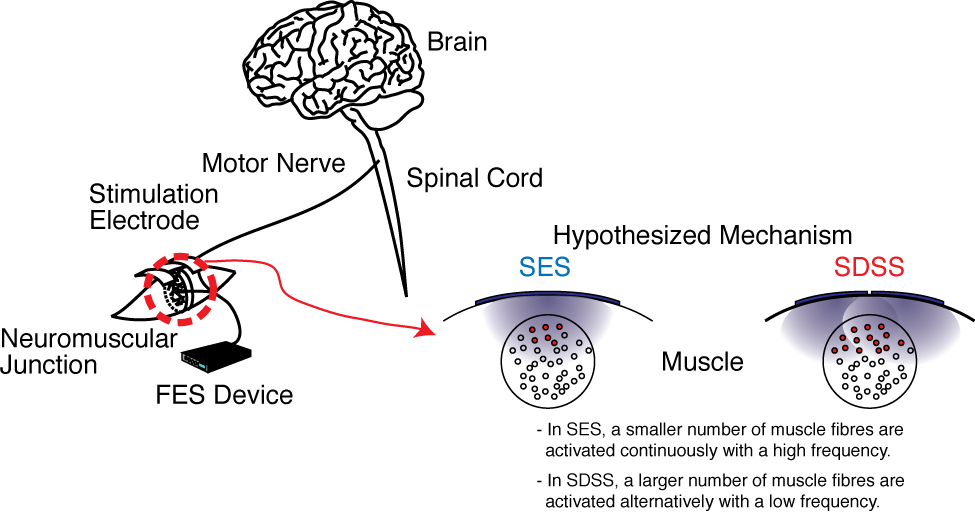Spatially distributed sequential stimulation to reduce muscle fatigue
Milos R Popovic, Kei Masani
Functional electrical stimulation (FES) can generate muscle contractions for rehabilitation and/or exercise. Usually, FES is applied using a single pair of electrodes, with only one active electrode (Single-Electrode-Stimulation; SES). Unfortunately, muscles activated by SES get tired (fatigue) and contraction forces decrease quickly, because muscles must be activated at unnaturally high rates to create useful contractions. To reduce fatigue, we have developed Spatially-Distributed-Sequential-Stimulation (SDSS), which rotates electrical pulses between multiple active electrodes to mimic natural muscle activation. The overall purpose of this project is to identify a method of delivering FES which maximizes neuromuscular performance, prolonging rehabilitation and/or exercise sessions for the user.

Project Publications
- A.J. Bergquist, V. Babbar, S. Ali, M.R. Popovic, and K. Masani, “Fatigue reduction during aggregated and distributed sequential stimulation” Muscle and Nerve, 2016. 10.1002/mus.25465
- D.G. Sayenko, R. Nguyen, T. Hirabayashi, M.R. Popovic, and K. Masani. “Method to reduce muscle fatigue during transcutaneous neuromuscular electrical stimulation in major knee and ankle muscle groups” Neurorehabilitation and Neural Repair, vol. 29, no. 8, pp:722-733, 2015.

- D.G.Sayenko, R. Nguyen, M.R. Popovic, and K. Masani. “Reducing muscle fatigue during transcutaneous neuromuscular electrical stimulation by spatially and sequentially distributing electrical stimulation sources” European Journal of Applied Physiology, Vol. 114, pp:793-804, 2014. 10.1007/s00421-013-2807-4

- R. Nguyen, K. Masani, S. Micera, M. Manfred, and M.R. Popovic. “Spatially distributed sequential stimulation reduces fatigue in paralyzed triceps surae muscles: A case study” Artificial Organs, Vol. 35, no. 12, pp:1174-1180, 2011, doi:10.1111/j.1525-1594.2010.01195.x.